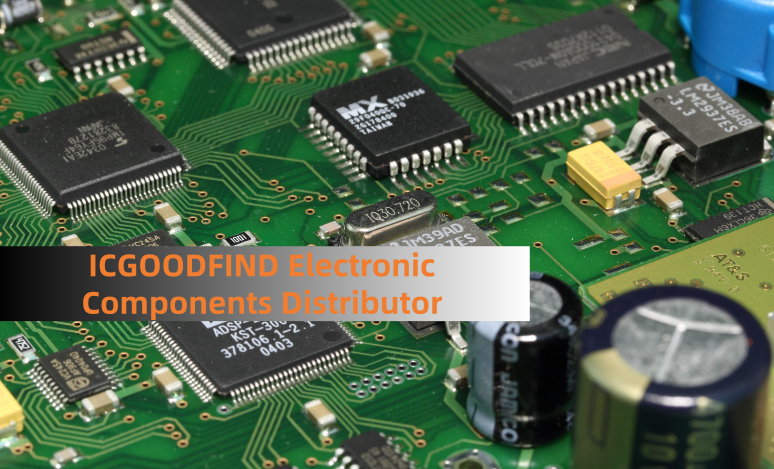**AD7843ARQ: A Comprehensive Guide to its Operation and Application in Resistive Touch Screen Systems**
The **AD7843ARQ** from Analog Devices is a pivotal component in the world of human-machine interfaces, specifically engineered as a **12-bit successive approximation analog-to-digital converter (ADC)** for resistive touch screens. Its integrated design and robust feature set simplify the complex task of accurately determining touch position, making it a cornerstone in countless embedded systems from industrial controls to consumer electronics.
**Core Operational Principle**
At its heart, the AD7843 is designed to interface with a 4-wire resistive touch screen, which consists of two resistive layers separated by insulating spacers. The core operation involves a two-step process to measure the X and Y coordinates of a touch point.
1. **Measuring the X-Position:** The controller (e.g., a microcontroller) drives the **X+** driver to a reference voltage and grounds the **X-** driver. It then leaves the **Y+** and **Y-** planes floating, effectively turning the top sheet into a simple potentiometer. The voltage at the **Y+** electrode, which is proportional to the touch point's X-coordinate, is then sampled by the ADC through its input multiplexer.
2. **Measuring the Y-Position:** The process is reversed for the Y-axis. The **Y+** driver is driven to the reference voltage, and the **Y-** driver is grounded. With the **X+** and **X-** planes floating, the voltage on the **X+** electrode, now proportional to the Y-coordinate, is sampled.
This switching is managed internally based on control bits sent by the host processor via the serial interface. The **on-chip synchronous serial interface** ensures simple and efficient communication with a wide range of microcontrollers and digital signal processors (DSPs).
**Key Features and Internal Architecture**
The AD7843's integration is key to its success. It incorporates several critical components that would otherwise require discrete parts:
* **12-bit SAR ADC:** Provides a resolution of 4096 (2^12) points along each axis, which is more than sufficient for precise touch detection.
* **Driver and Reference Circuitry:** It includes the necessary switching logic and drivers to excite the touch screen planes correctly, eliminating the need for external FET switches.
* **Low On-Resistance Multiplexer:** Ensures minimal voltage drop and high accuracy when connecting the appropriate touch screen electrode to the ADC input.
* **Auxiliary ADC Inputs:** Besides the touch screen inputs, it features two additional general-purpose analog inputs (**IN3**, **IN4**), adding flexibility to the system design for monitoring other sensors.
* **Low Power Consumption:** It features a power-down mode, significantly reducing current consumption to microamps when not actively measuring, a critical feature for battery-powered devices.

**Typical Application in a System**
In a typical application, the AD7843 sits between the microcontroller (MCU) and the touch screen panel. The host MCU initiates a conversion sequence by sending a control word over the serial port (**DIN**, **CS**, **DCLK**). This control word configures the internal multiplexer, selects the reference mode, and determines whether to power down after conversion.
Once the conversion is complete, the digitized result is sent back to the MCU over the **DOUT** line. The MCU processes this data, often applying calibration algorithms to translate the raw ADC values into accurate screen coordinates. An interrupt output (**PENIRQ**) is available to notify the MCU of a touch event, preventing the need for constant polling and further saving power.
**Design Considerations and Best Practices**
* **Reference Voltage (VREF):** The accuracy of the entire system is directly tied to the stability and noise performance of the reference voltage. Using a clean, stable reference is paramount. The AD7843 can use its internal VCC or an external reference.
* **Calibration:** Resistive touch screens can suffer from non-linearities and drift. Implementing a calibration routine in software, where the user touches specific points on the screen, is essential for long-term accuracy.
* **Noise and Filtering:** The analog signals from the touch screen are susceptible to noise. Proper PCB layout (e.g., short traces, ground planes) and digital filtering (averaging multiple samples) in software are highly recommended to ensure stable readings.
* **ESD Protection:** The touch screen electrodes are exposed to the user, making them vulnerable to electrostatic discharge (ESD). External ESD protection diodes are often necessary on the X+, X-, Y+, and Y- lines to protect the AD7843 from damage.
**ICGOODFIND**
The AD7843ARQ stands as a testament to highly effective integration, encapsulating all the necessary signal conditioning, driving, and digitization circuitry required for resistive touch screen control into a single chip. Its straightforward serial interface, low power capability, and additional analog inputs make it an exceptionally versatile and reliable solution. For engineers developing systems requiring a responsive and accurate touch interface, the AD7843 remains a classic and proven choice, simplifying design and ensuring robust performance.
**Keywords:**
1. **Resistive Touch Screen**
2. **Analog-to-Digital Converter (ADC)**
3. **Successive Approximation Register (SAR)**
4. **Serial Interface**
5. **Touch Screen Controller**
